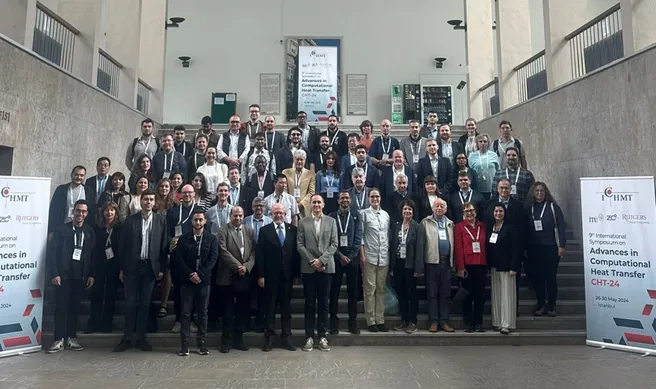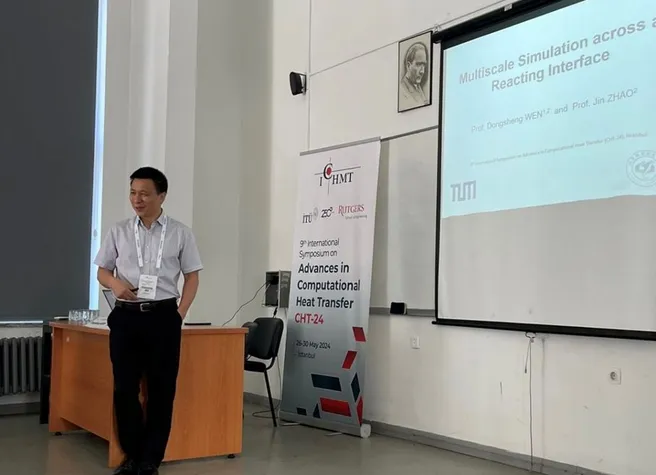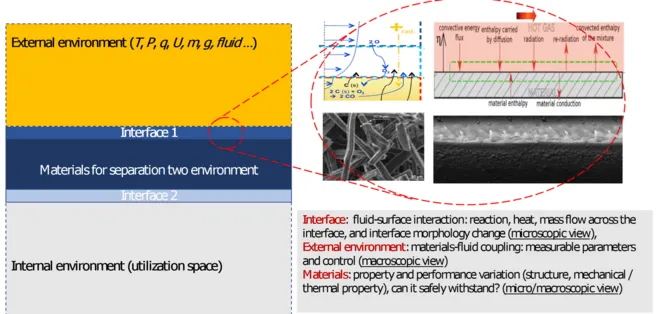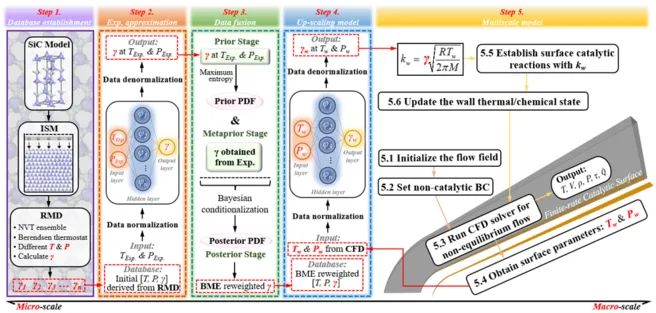Professor Wen delivered a keynote talk at the "9th International Symposium on Advances in Computational Heat Transfer (CHT-24)", 26-30 May, 2024 in Istanbul. The symposium series are organized by the International Centre for Heat and Mass Transfer (ICHMT) and held every two years to promote the exchange of ideas, methods and results in the field of computational heat transfer.
Interface is everywhere that plays an extremely important in role regulating flow and heat transfer. The breakage of the continuity and non-slippery assumptions at or close to the interface presents a big challenge in modelling. The situation becomes much more complex for an interface involving various chemical reactions such as corrosion and oxidation. One of these examples is the thermal protection materials (TPM), which have to be able to withstand high heat and stress under extreme conditions. The strong aero-heating associated with hypersonic flow leads to various complicated physiochemical phenomena. The fluid flow and heat transfer close to the interface exhibits strong thermal/mechanical/chemical multi-fields coupling effects in a highly non-equilibrium environment.
Prof. Wen presented our progress in the multiscale reactive molecular dynamics (RMD)-CFD coupling and simulation of transport phenomenon across interfaces where strong chemical reactions occurs. Examples studies of heat and mass transfer across an interface where surface catalysis, surface oxidation and ablation occurs under highly non equilibrium conditions for different types of TPM are illustrated. The limitation, and challenges of our multiscale approach, as well as perspective outlook of future multiscale simulation is discussed.




